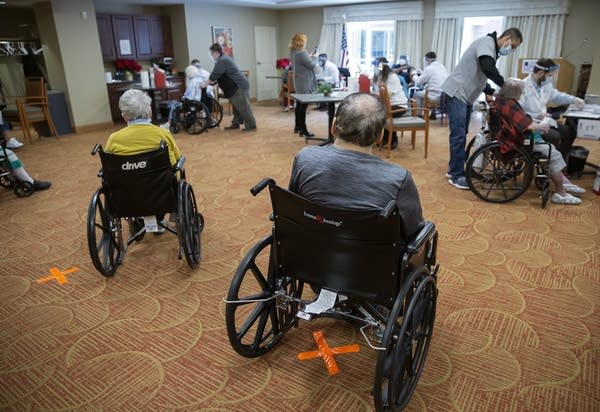Lawmakers face tough math in pandemic pay plan

Residents at the Gardens of Episcopal Homes in St. Paul social distance as they're monitored after getting a COVID-19 vaccine in December 2020.
Christine T. Nguyen | MPR News 2020
Go Deeper.
Create an account or log in to save stories.
Like this?
Thanks for liking this story! We have added it to a list of your favorite stories.


